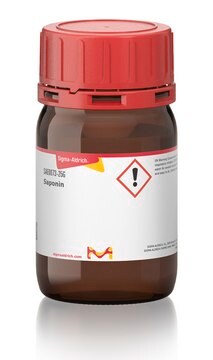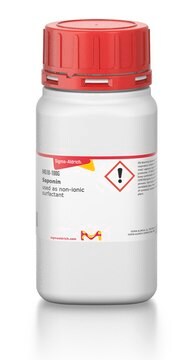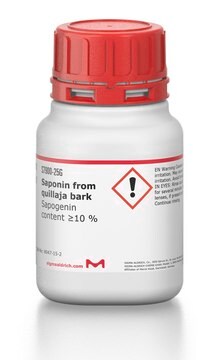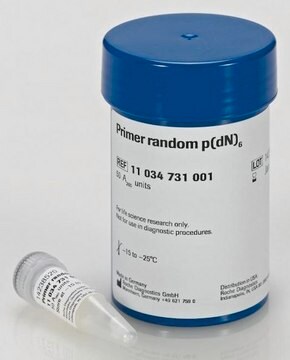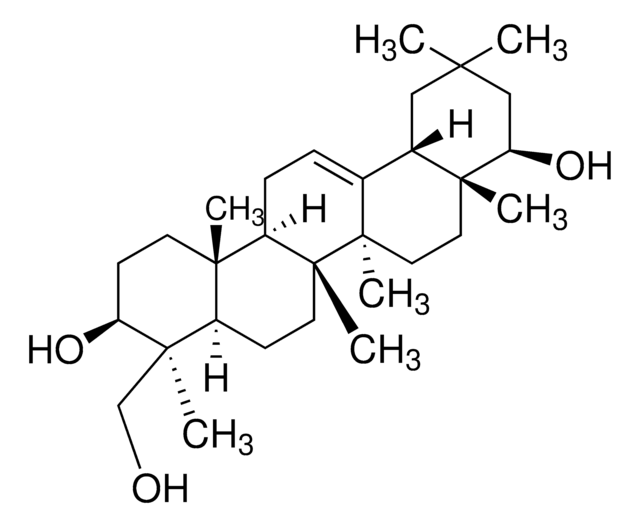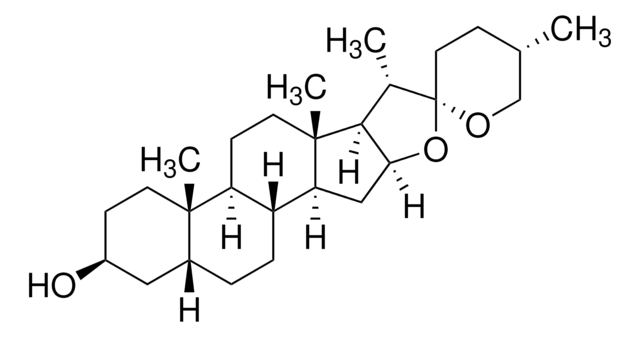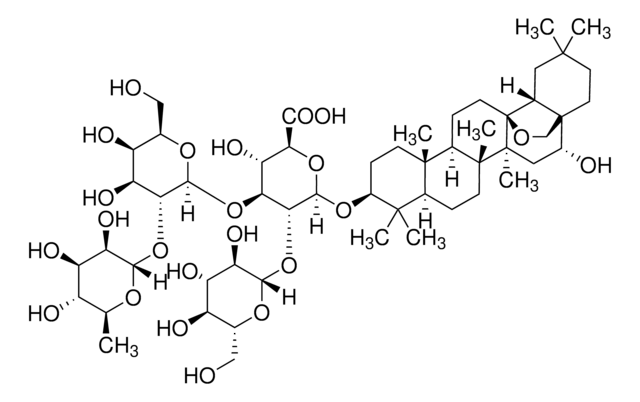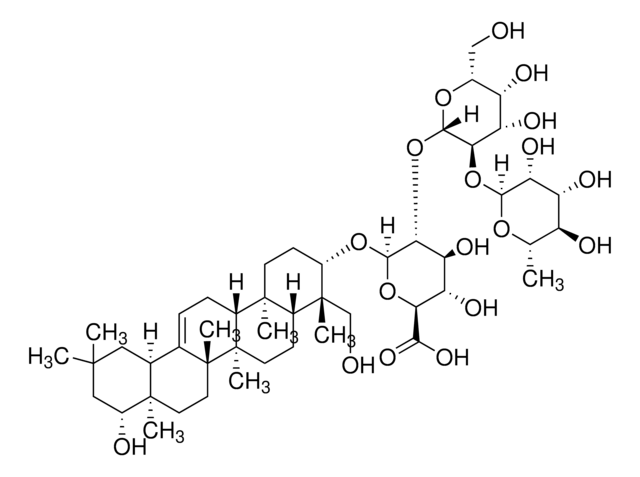S4521
Saponin from Quillaja sp.
Sapogenin content 20-35 %
Autenticatiper visualizzare i prezzi riservati alla tua organizzazione & contrattuali
About This Item
Prodotti consigliati
Descrizione
non-ionic
Livello qualitativo
Composizione
Sapogenin content, 20-35%
tecniche
HPLC: suitable
protein quantification: suitable
Ceneri solfatate
≤10%
Descrizione generale
Saponins are steroid or triterpenoid glycosides. They are biosurfactants that have several uses in the food and cosmetic industry.
Applicazioni
Saponin from Quillaja bark has been used:
- to stain fertilized oocytes
- in the analysis of intracellular cytokine production
- to permeabilize dendritic cells
Azioni biochim/fisiol
Saponins solubilize the low density lipoprotein (LDL) fraction of cholesterol in micelles, thus lowering their concentration. Saponin from Quillaja bark is used as a flavoring agent in food and beverages. This saponin has been shown to enhance immune-cell proliferation in vitro.
Potent hemolytic when injected i.v.; surfactant that enhances penetration of proteins and other macromolecules through cell membranes; it also has been used as an adjuvant for vaccines.
Nota sulla preparazione
Purified to remove low molecular weight contaminants
Avvertenze
Warning
Indicazioni di pericolo
Consigli di prudenza
Classi di pericolo
Eye Irrit. 2 - STOT SE 3
Organi bersaglio
Respiratory system
Codice della classe di stoccaggio
11 - Combustible Solids
Classe di pericolosità dell'acqua (WGK)
WGK 2
Punto d’infiammabilità (°F)
Not applicable
Punto d’infiammabilità (°C)
Not applicable
Dispositivi di protezione individuale
dust mask type N95 (US), Eyeshields, Gloves
Scegli una delle versioni più recenti:
Possiedi già questo prodotto?
I documenti relativi ai prodotti acquistati recentemente sono disponibili nell’Archivio dei documenti.
I clienti hanno visto anche
Subset-dependent modulation of dendritic cell activity by circovirus type 2.
Vincent IE
Immunology, 115(3), 388-398 (2005)
Isolation of myeloid and plasmacytoid dendritic cells from human bronchoalveolar lavage fluid.
Tsoumakidou M
Immunology and Cell Biology, 84(3), 267-273 (2006)
Dynamic chromatin modifications characterise the first cell cycle in mouse embryos.
Santos F
Developmental Biology, 280(1), 225-236 (2005)
Yvonne Lange et al.
Biochemistry, 48(36), 8505-8515 (2009-08-07)
A few membrane-intercalating amphipaths have been observed to stimulate the interaction of cholesterol with cholesterol oxidase, saponin and cyclodextrin, presumably by displacing cholesterol laterally from its phospholipid complexes. We now report that this effect, referred to as cholesterol activation, occurs
Adjuvant effects of saponins on animal immune responses.
Rajput ZI
Journal of Zhejiang University. Science. B, 8(3), 153-161 (2007)
Il team dei nostri ricercatori vanta grande esperienza in tutte le aree della ricerca quali Life Science, scienza dei materiali, sintesi chimica, cromatografia, discipline analitiche, ecc..
Contatta l'Assistenza Tecnica.
